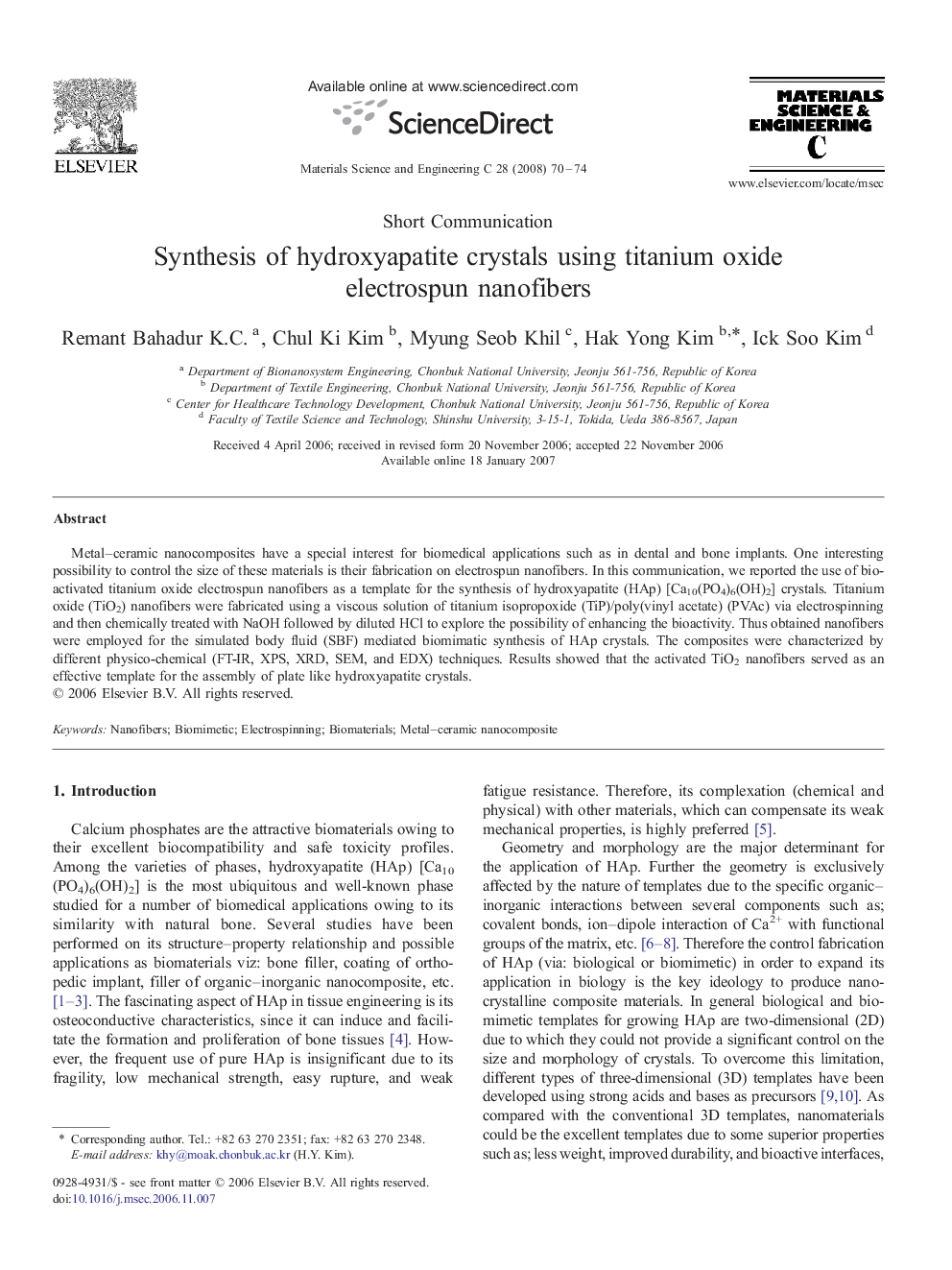| Article ID | Journal | Published Year | Pages | File Type |
|---|---|---|---|---|
| 1430061 | Materials Science and Engineering: C | 2008 | 5 Pages |
Metal–ceramic nanocomposites have a special interest for biomedical applications such as in dental and bone implants. One interesting possibility to control the size of these materials is their fabrication on electrospun nanofibers. In this communication, we reported the use of bio-activated titanium oxide electrospun nanofibers as a template for the synthesis of hydroxyapatite (HAp) [Ca10(PO4)6(OH)2] crystals. Titanium oxide (TiO2) nanofibers were fabricated using a viscous solution of titanium isopropoxide (TiP)/poly(vinyl acetate) (PVAc) via electrospinning and then chemically treated with NaOH followed by diluted HCl to explore the possibility of enhancing the bioactivity. Thus obtained nanofibers were employed for the simulated body fluid (SBF) mediated biomimatic synthesis of HAp crystals. The composites were characterized by different physico-chemical (FT-IR, XPS, XRD, SEM, and EDX) techniques. Results showed that the activated TiO2 nanofibers served as an effective template for the assembly of plate like hydroxyapatite crystals.
